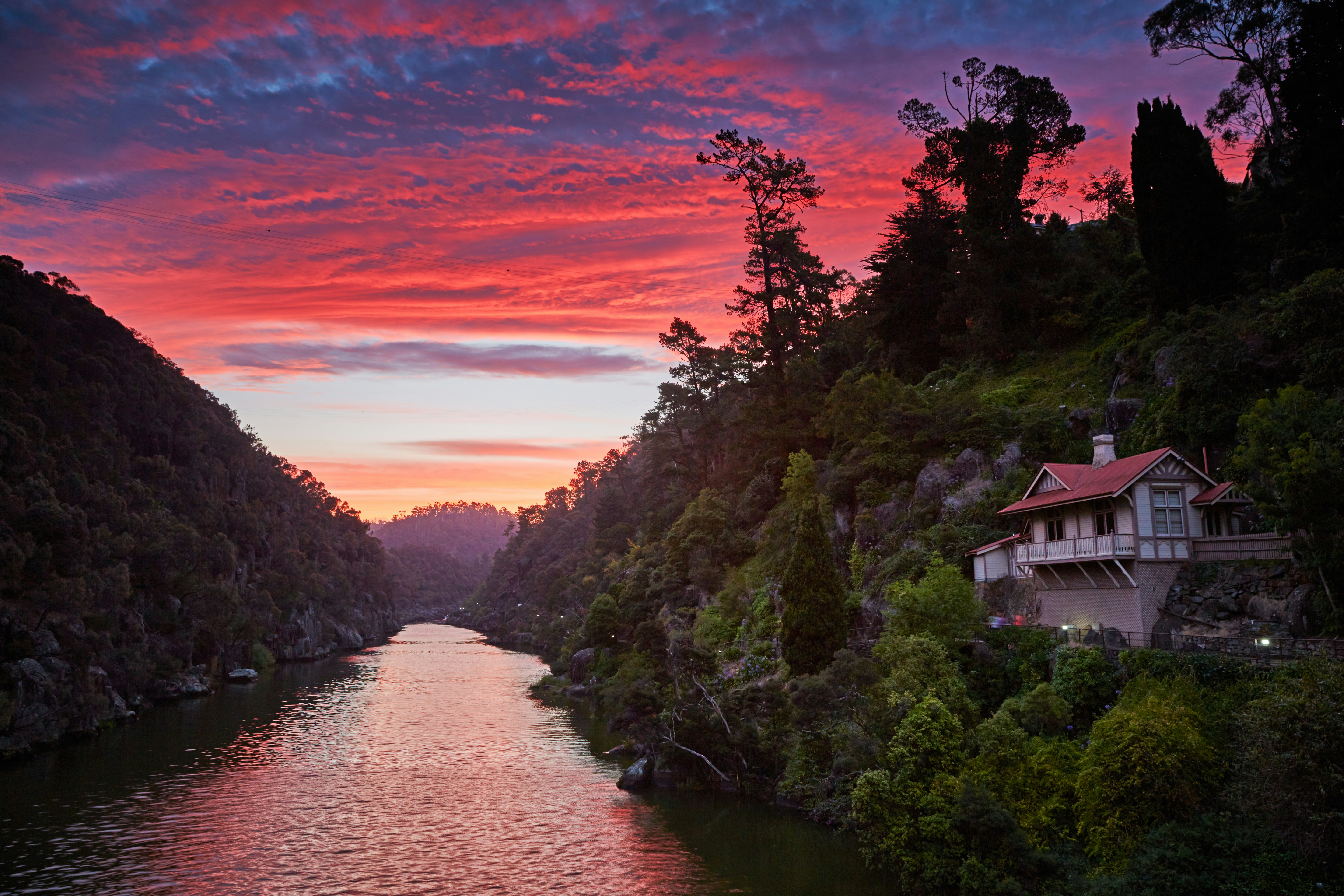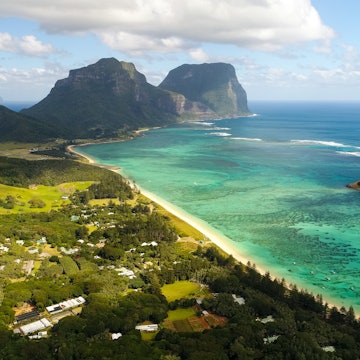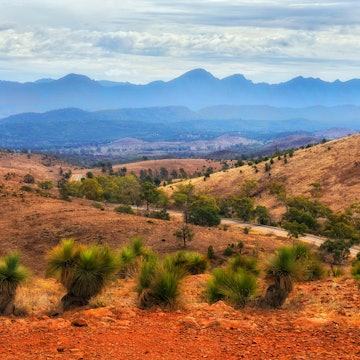
A first-time guide to Launceston and the Tamar Valley, Australia
Aug 7, 2024 • 8 min read

Launceston is blessed with top-notch dining, excellent fresh produce, world-class wineries and access to national parks brimming with wildlife. Getty Images
Launceston might be Tasmania’s second-largest city, but it’s a place where nature and nurture continue to play leading roles.
With a deep and dramatic gorge reaching almost into the city center, Launceston is surrounded by the wine-producing slopes of the Tamar Valley where lush red volcanic soils nourish some of Australia’s finest produce.
It’s this combination of fine food and premium wine, along with the wealth of island seafood, that fuels a dining scene that saw this city of just 90,000 people anointed as a UNESCO City of Gastronomy in 2021 – one of only 57 such cities in the world, and just the second in Australia.
When you’re done wining and dining, Launceston is also a prime base for explorations into Tasmania’s celebrated outdoors: it's closer than the capital, Hobart, to the state’s star natural feature of Cradle Mountain and only a 2hr drive to Wineglass Bay in Freycinet National Park.
Launceston and the Tamar Valley Tasmania, Australia is one of the best regions to visit next year. See our full list of Best in Travel 2025 winners.

When should I go to Launceston and the Tamar Valley?
Launceston shines brightest in the southern summer (December to February), when maximum temperatures average around 23°C and its festival calendar is at its most active. It’s the season of food-focused Festivale in City Park, the New Year’s Eve Launceston BeerFest, and the big-wheel-turning National Penny Farthing Championships in outlying Evandale.
If you’re contemplating day trips, the lavender rows at photogenic Bridestowe Lavender Estate, the largest lavender farm in the Southern Hemisphere, are at their flowering finest.
Autumn (March to May) brings the year’s most stable weather conditions, with lingering warmth and a thinning of summer crowds. It’s also the time of harvest around the Tamar Valley vineyards.
How much time should I spend in Launceston and the Tamar Valley?
How deep is your thirst? Time in Launceston might be dictated by cellar doors, with wineries spilling along both banks, and the backing slopes, of the Tamar Valley. The city itself can be covered in a couple of days. If the sun is shining, you might want to add a day to follow the locals to the beach at nearby favourite Bridport, around an hour’s drive northeast of the city. All considered, a week should provide ample time to get to know Launceston and explore its surrounds. And you’ll need all of those evenings to tick your way through Launceston’s best restaurants.

Is it easy to get in and around Launceston and the Tamar Valley?
Launceston has quick links to the mainland with Launceston Airport just 15km to the city’s south. Vehicle ferries sail from Geelong (Victoria) to Devonport, 100km to Launceston’s west. Buses operated by Kinetic run between Launceston and Hobart, taking around three hours, and continue on to Devonport and Burnie.
Launceston’s city center is compact and walkable, with even Cataract Gorge at strolling distance – it’s a 15-minute walk from the mall on Brisbane St to the mouth of the gorge. A number of companies provide tours and transport to wineries in the Tamar Valley.
Top things to do in Launceston and the Tamar Valley
Dining delights
If Launceston’s dining scene is good enough to impress UNESCO, you know you’re in for a treat. The city’s secret is in its soils and seas, with exquisite local produce and seafood forming the building blocks of Launceston menus.
Go to the source at the Harvest Market, which fills a city-center parking lot each Saturday morning with vegetables, cheese, berries, oysters, mushrooms, cider, whisky, hazelnuts and a whole lot more.
The restaurant scene is strong and accented by local flavours. Headlining the offerings are stalwarts such as Stillwater, set inside an 1830 flour mill by the mouth of Cataract Gorge, and the meaty munchies of Black Cow Bistro, delivering sought-after cuts such as Robbins Island wagyu and Cape Grim beef.
Even the vineyards are in on the food game, with some fine dining rooms tucked within cellar doors. The restaurant at Josef Chromy Wines in Relbia, at the southern edge of Launceston, has been “hatted” – an Australian nod to the best restaurants – while local is law at Timbre, looking out over kanamaluka/ River Tamar from Velo Wines.
For breakfast or brunch, start the day the right way at Earthy Eats, with its focus on local, sustainable ingredients, or Bread + Butter, inside an old motorcycle warehouse and making the bread and butter of its name on site.

Cataract Gorge
Imagine the tourist crush if there was a deep, craggy gorge reachable within 500m of the city center of New York, Tokyo or any other major world city. But such is Launceston’s natural advantage – with the South Esk River carving through the hills to form the magnificent Cataract Gorge.
Doubling as Launceston’s central play piece, the gorge is threaded with walking trails. Head as far upstream as the old Duck Reach Power Station – one of the world’s first hydroelectric plants – 3km inside the gorge, then double back to First Basin, where most of the gorge action takes place.
Set into its lawns is an open-air public swimming pool (open November to March), while the world’s longest single-span chairlift zips across the river. At its end, among wallabies and peacocks, Gorge Restaurant adds zest to a gorge visit with high tea or lunch.
Kayakers fight the rapids through the gorge during water releases from the upstream dam, while daily boat trips with Tamar River Cruises nose into the gorge for perspective from the water.
Tamar Valley wineries
Tasmania crushes just 1% of Australia’s wine, but it’s premium level, highly regarded and at its most concentrated in the Tamar Valley that stretches north from Launceston. It’s a compact wine region, split into neat halves by kanamaluka/ River Tamar, making it a pleasure to tour and taste.
The Tamar Wine Route incorporates around 30 cellar doors, from rustic Swinging Gate with its welcoming party of Nellie the dog (who once graced the cover of a book about winery dogs) to the architecturally arty Stoney Rise. Meet one of the Tamar Valley wine pioneers, Andrew Pirie, at appointment-only Apogee, and feed apples to the house pig (Pinot d’Pig) at Holm Oak.
Pinot noir is king in this cool-climate region, but the range of varietals is broad. Bubbles take over around Pipers Brook on the east bank, and they’re of world-class quality. House of Arras’s 2004 EJ Carr Late Disgorged was named the world’s best sparkling in 2020, and its creator, Ed Carr, was named Sparkling Winemaker of the Year at the International Wine Challenge in 2024 (only the second time the award had been won by a winemaker from outside France).
Divide a wine stay into two: a journey along the west bank will cover around 100km, while a loop along the east bank and Pipers Brook makes for a 150km drive.

My favourite thing to do in Launceston and the Tamar Valley
It’s tough not to just keep wandering into and through Cataract Gorge when I find myself in Launceston, but I’m inevitably drawn north – downstream through the Tamar Valley – to where the wild things are.
Narawntapu National Park has been dubbed the “Serengeti of Australia” – and while it’s a fanciful title, its vast clearings at Springlawn heave with wallabies and Forester kangaroos around dawn and dusk. The long white stripes of often-empty Bakers Beach and Badger Beach are a sandy bonus.
Atop kanamaluka/ River Tamar, the critter crawl continues at Platypus House where, despite the name, the crazy concoction that is the platypus is unexpectedly outshone by the echidnas – come at feeding time and they’ll be all but scrambling over your feet.
Cross the river to Low Head near sunset and the wild animal of choice is little penguins, shuffling ashore across a small beach visited by Low Head Penguin Tours. Your toes might even get a tiny trample again.
How much money do I need for Launceston and the Tamar Valley?
There’s little around Launceston and the Tamar Valley that's the absolute top-end for accommodation, but there’s a nice spread of good hotels through to glamping in the vines and bare-bones beachside camping at Narawntapu National Park.
Quality dining comes at a price, reflective of Tasmania’s emergence as a premium food producer, but the wealth of outdoor possibilities makes for cheap exploration during the days.
National park campground: site AU$13
Dormitory bed in a hostel: AU$20
Room in a hotel: from AU$110
Public transport ticket: around AU$1.70 per bus ride
Coffee: AU$5
Pub meal: AU$20
Dinner at a top-end restaurant: AU$75
Pint of craft beer: AU$11

Bring plenty of layers, no matter the season
You can spot a Tasmanian by the fact that they carry a jumper with them regardless of the season – weather conditions and temperatures can turn rapidly and significantly. When the sun is out, temperatures here feel warmer than the number suggests, but when it turns cold, everyone grabs for their “Tassie tuxedo” – the local term for a down jacket.
What’s in a name?
If you want to win over the Launceston locals, get the pronunciation of their city right… it's "lon-cess-ton".
Ski out more than ski in
Launceston is the closest city to Tasmania’s prime ski field Ben Lomond, just an hour away by car, but with Tasmania’s maritime climate, dumps are infrequent and snow conditions fluky. There are often just a few ski days each winter, so check ahead on conditions if you fancy hitting the slopes.













